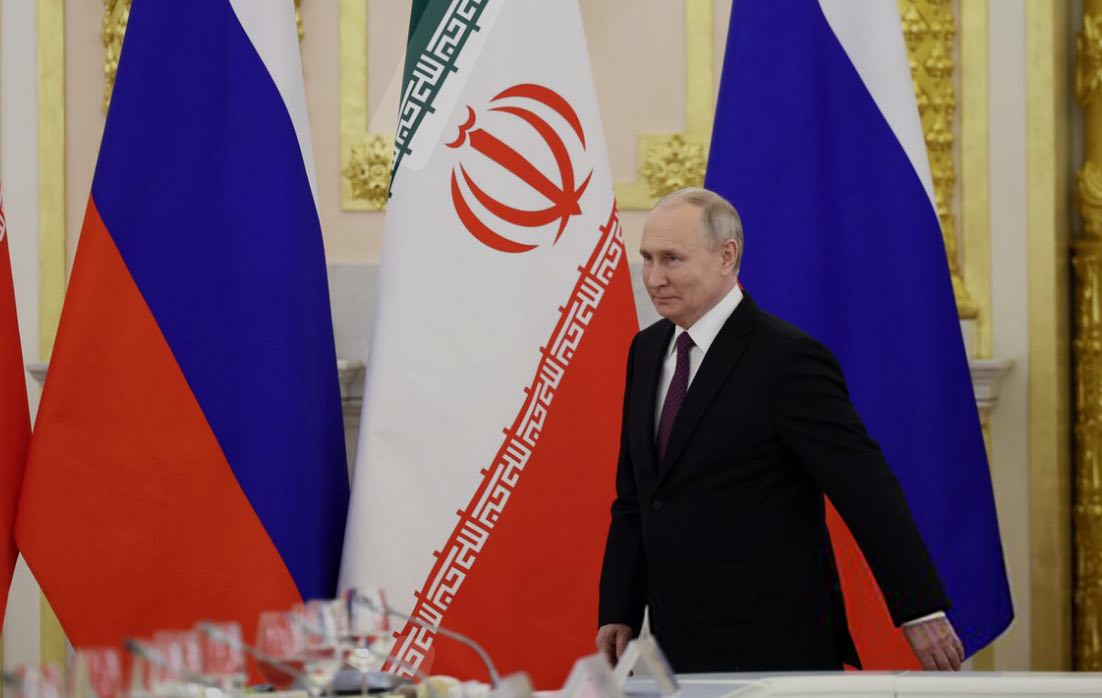Russia, the Greedy Neighbor
Since the early 1990s, when the five countries of Uzbekistan, Tajikistan, Turkmenistan, Kyrgyzstan, and Kazakhstan declared independence from the Soviet Union, the Islamic Republic of Iran has been trying to establish close relations with these countries as a friend. Tehran had unique features to offer these countries.
On one hand, the shared cultural sphere connected Iran to the Central Asian countries, and on the other hand, Iran’s geopolitical advantage as a route to open waters could help these landlocked countries escape their geographical trap. The Central Asian countries, having just emerged from nearly a century of Moscow’s communist rule and the Cold War, were looking to diversify their foreign relations and open a new chapter in their foreign policy and international relations.
Iran’s first step towards developing relations with Central Asia was initiated by the late Iranian President Akbar Hashemi Rafsanjani, with the signing of the South-North transit agreement and linking Central Asian railways to Iran’s national railway. In 1996, with the opening of the last section of the Mashhad-Sarakhs-Tajan railway, the Central Asian railways were effectively connected to the ports of Bandar Abbas and Bandar Imam Khomeini in Iran, completing the rail link to the Persian Gulf. That same year, an energy cooperation agreement with Turkmenistan was signed, and Iran began importing gas from Turkmenistan to supply the northern regions and swap gas with Turkey and the southern regions.
The transit and energy connections between Iran and Central Asia could have been the beginning of a wide-ranging, long-term cooperation between Iran and the five Central Asian countries. However, over the past three decades, things have not progressed according to Tehran’s wishes. Some mistakes on Tehran’s part, the authoritarian regimes in Central Asian countries, and the undeniable influence of Russia in these countries have prevented Iran from leveraging its advantages to develop relations with Central Asian countries.
From the very beginning of the Soviet Union’s collapse, Moscow exerted all its efforts to maintain its sphere of influence over the former Soviet territories through the Commonwealth of Independent States agreement, ensuring no foreign power could become a hegemon or rival power in these regions. Despite the ups and downs of Russian power over the past three decades, this global power has always managed to maintain its dominance in the South Caucasus and Central Asia, even though it was largely unsuccessful in retaining the Baltic states.
Moscow’s political dominance in Central Asia has meant that despite extensive efforts by rival global powers, namely China and the United States, to gain influence in this region, these efforts have so far failed. Over the past decade, China has managed to significantly expand its influence in Central Asian countries through loans and mega infrastructure projects under the Belt and Road Initiative. However, the political orientation of the governments in this region remains under Russian influence.
Russia and China have expanded their cooperation in this region through the development of the Shanghai Cooperation Organization, extending their collaboration through security mechanisms. Iran has recently become a full member of this organization, but it is unclear whether Iran can influence regional security mechanisms with the presence of China and Russia. It seems more likely that being part of this organization will result in Iran being influenced by the security mechanisms devised by China and Russia.
Iran is simultaneously seeking to join the Eurasian Economic Union, of which Kazakhstan and Kyrgyzstan, along with Russia, Belarus, and Armenia, are members, to benefit from free and tariff-free trade with these five countries. In recent years, Iran’s efforts to increase its influence in the Central Asian region have been through joining mechanisms developed by Russia or jointly by Russia and China.
However, Iran’s conflicting interests with Russia have often prevented it from benefiting from these mechanisms. For example, while energy-producing countries in Central Asia are interested in using east-west energy transfer routes to deliver energy to Europe, Russia is unwilling to accept a competitor in selling energy to Europe and seeks to obstruct this. In the North-South Corridor project, Russia is trying to bypass Iran’s existing connections with Central Asia and redirect the corridor towards the South Caucasus.
To achieve an independent relationship with Central Asian countries, Iran must, alongside cooperating with Russia and China, once again pursue independent policymaking and bilateral and multilateral initiatives separate from Beijing and Moscow to collaborate with Central Asia and free itself from Russia’s obstruction and hindrances.

